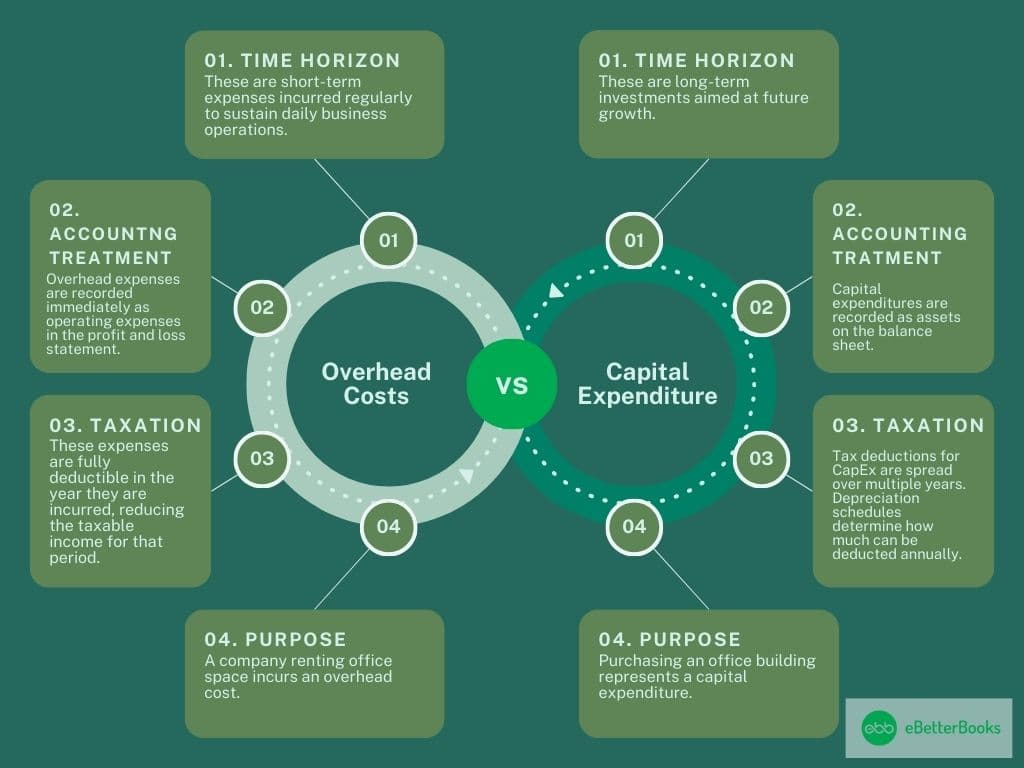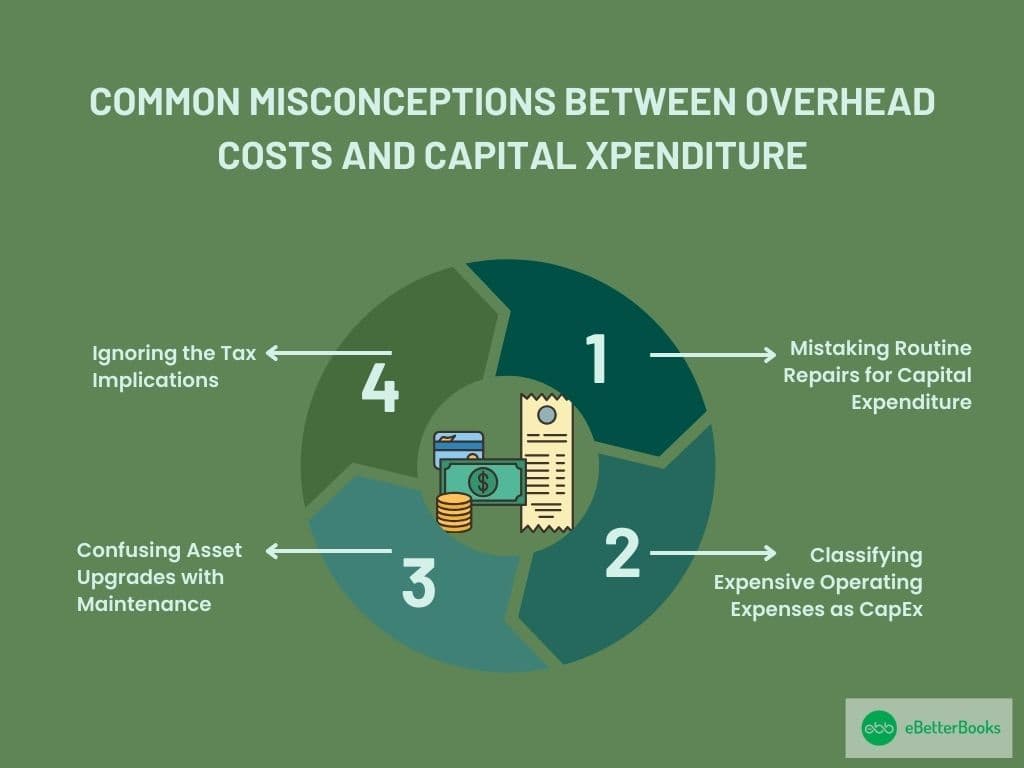
Live Support
+1-802-778-9005Overhead costs are easily distinguishable from capital expenditures (CapEx), and their classification plays a significant role in operational effectiveness and compliance. Overhead costs are common ongoing expenses inherent in carrying out business activities in a day, compared to capital expenditures, which are costs incurred in procuring assets with a useful life beyond the current year.
This is not merely an academic differentiation. It has real economic consequences for revenues, statements, and spreadsheets. For instance, the incorrect categorization of an expense means that the firm is compliant, resource allocation is improper, or financial fraud is occurring. When these two categories are defined more clearly, the companies’ financials will be clearer, thus enabling managerial support for strategic goals.

Overhead costs are costs that a business organization needs to maintain at a given time to keep its operation running. Still, these costs cannot be easily associated with the production of goods or provision of services. Fixed expenses, variable expenses, and semi-variable expenses are dependent on the nature of the business that is carried out.
Capital expenditures are expenses incurred by a business to acquire, improve, or maintain physical infrastructure, including land, buildings, or other accessories. They are meant to achieve other gains and improve a company’s future size or productivity.
Below are the key differences between overhead costs and capital expenditure in a table form:
| Basis | Overhead Costs | Capital Expenditure |
| Time Horizon | These are short-term expenses incurred regularly to sustain daily business operations. For example, paying monthly electricity bills ensures that the lights and equipment remain operational. | These are long-term investments aimed at future growth. For instance, buying new manufacturing equipment may increase production capacity for years. |
| Accounting Treatment | Overhead expenses are recorded immediately as operating expenses in the profit and loss statement. They impact the current year’s financial results. | Capital expenditures are recorded as assets on the balance sheet. Their costs are distributed over several years through depreciation or amortization. |
| Impact on Taxation | These expenses are fully deductible in the year they are incurred, reducing the taxable income for that period. | Tax deductions for CapEx are spread over multiple years. Depreciation schedules determine how much can be deducted annually. |
| Purpose | These expenses support the ongoing operations of a business, such as maintaining a comfortable work environment for employees. | These investments aim to improve efficiency, expand capacity, or support long-term strategic goals. |
| Example | A company renting office space incurs an overhead cost. | Purchasing an office building represents a capital expenditure. |
The distinction between overhead costs and capital expenditure is critical for several reasons:
It is sometimes cumbersome to distinguish between the overhead costs and the capital expenditures. The most common misclassifications resulted in financial reporting and compliance problems.
Below are four common misconceptions:

Reaching a good level in overhead costs and capital expenditures needs to be controlled and managed in advance and operate efficiently.
Here are four tips for each category:
To clarify the concept, it is crucial to explain the practice of using overhead costs and capital expenditures (CapEx).
Below are case studies for each category:
A global tycoon of products, namely General Electric Co., encountered some performance issues related to the problem of overhead costs during a slump in the energy market. As part of its continuous improvement program, GE at least had to conduct a company-wide audit that pointed out many of the overhead costs it was incurring that may not be necessary. Organizational bureaucracy was cut down, employee headcount was slashed, and administrative staff saw their salaries cut down as overlapping positions were merged. Back-office operations were partially or fully digitized. GE also changed suppliers’ contracts to reduce utility and maintenance expenditures.
Result: The integration of activities mitigated overhead cost effects and enhanced profit during unfavorable market conditions.
E-retailer giant Amazon continues to expand its inventory space, given its relentless dedication to a speedy delivery strategy. The company invested billions in CapEx to build modern complex warehouses with robotics and automation systems installed. These centers were positioned to help minimize delivery time and convey operational efficiencies.
Result: Through such capital expenditures, Amazon has increased its consolidated order fulfillment capacity, improving customer satisfaction and competitiveness.
Recently, high energy bills were seen as a major overhead cost in Starbucks, a leading coffeehouse chain. To tackle this, the company created awareness about energy efficiency, for example, by installing efficient lighting, heating, ventilation, and air conditioning systems in all its outlets. Subordinates were encouraged to change their behaviors in the use of energy through knowledge and, for instance, by conserving electricity by switching off apparatuses where not required.
Result: Starbucks reduced its annual energy usage by 25 % and saved millions of dollars, strengthening its mission and helping enhance corporate responsibility for sustainability.
The application is best captured by Tesla’s Gigafactories exemplification of strategic CapEx planning. The company spent a lot of money constructing these colossal structures purposely to manufacture electric vehicle batteries and powertrains. Thus, by economizing battery in-house to integrate battery production vertically, Tesla was able to cut through certain percentages of its costs in the long run.
Result: By introducing the idea of Gigafactories, they have strategically placed Tesla directly in the middle of EV production, cutting production costs by half and upping output to record levels.
These cases depict how proper overhead cost and CapEx management improve operating efficiency and firm growth. In this way, one can abstract best practices that guide the formulation of suitable strategies for performance improvement for businesses.
It is important to differentiate overhead costs from capital expenditures. Incorrect classifications distort reporting, but tax problems occur when the government receives or pays the wrong amount. In fact, business leaders can dismantle the myths and realize how certain principles can really help improve overall business processes.
Business owners and managers need to consider certain tips, as these will pave the way for making certain changes in business to increase efficiency and improve prospects. Understanding that all expense categories possess peculiarities allows firms to arrive at the right decisions, all of which contribute to achieving sustainable business successes within emerging competitive environments.